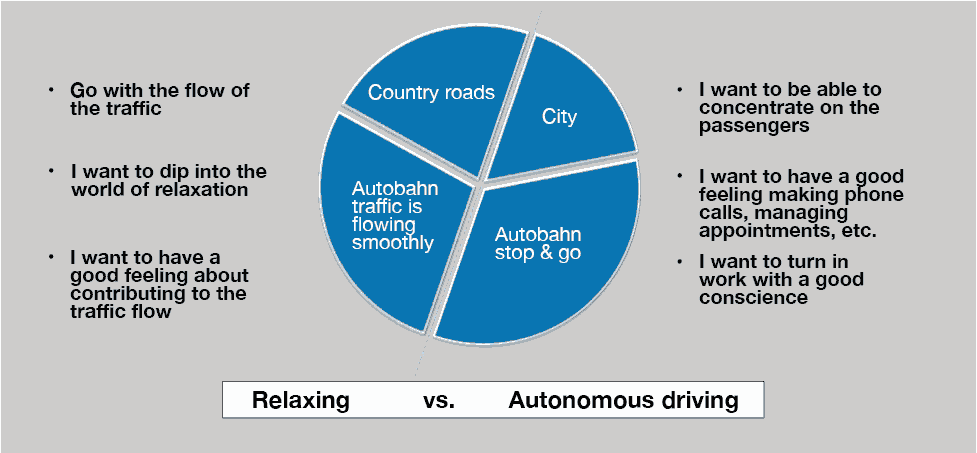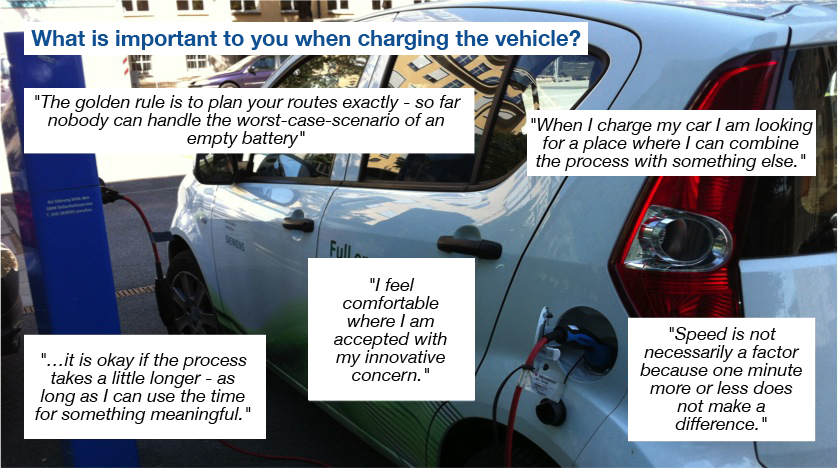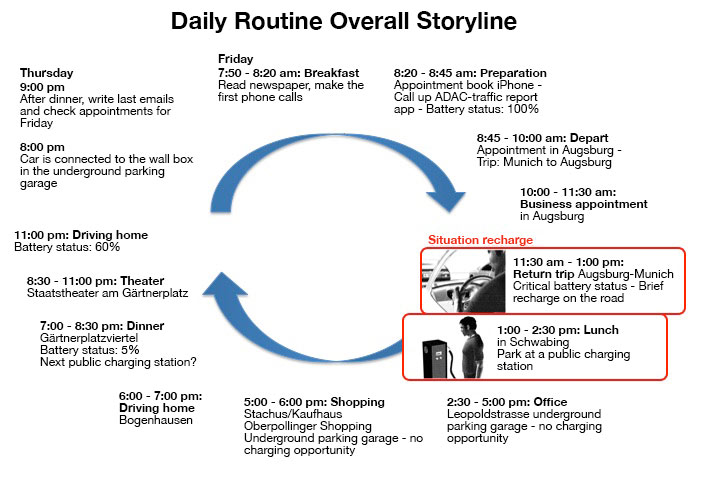Structure the Current Status.
Structure the user experiences.
Why.
In order to find opportunities from the customer's responses examine the reports for motives and experience potentials.
What.
Summarize the customers' statements and structure them to identify underlying motives and needs.
How.
Hands-on experiences and real user behavior.
At least two analyzers read the statements received from the interview and divide them into text modules. Organize the interview responses into syntactic units, such as goals, problems, situations, activities. You can also assign codes to these text modules (e.g. often/seldom, good/bad). After a first review, create a list of codes according to the interview responses.
Assign the same statements to a common category, e.g. a higher ranking motive. Do not define categories or motives a priori but form them during the course of the analysis, depending on the statements of the interview partners. Then assign motives of the users in one situation to the underlying needs. The needs are the underlying reasons as to why the user has a motive. For example, if you extract the motive "I want to know if my drive is operating" from a report on a driving situation with an electric car, then the needs can be assigned to security. After the review, the analyzers compare and adjust their category system.
Reconstruct a daily routine from the statements ("A day in a life of...") with which it is possible to read possible usage situations, tasks or problems of the user. Base questions, such as "What kind of situations can the user of an electric car get into?" on this structuring.
Summarize the experience reports of the users in form of an overview of their goals, problems, motives and needs.
References
Glaser, B. G. & Strauss, A. L.(2005): Grounded Theory. Strategien qualitativer Forschung. Verlag Hans Huber. Bern. 2. Auflage.
Kumar, Vijay (2013): 101 Design Methods. A Structured Approach for Driving Innovation in Your Organization. Hoboken, New Jersey: John Wiley & Sons, Inc.
Mayring, Ph. (2000). Qualitative Inhaltsanalyse. Grundlagen und Techniken (7. Auflage, erste Auflage 1983). Weinheim: Deutscher Studien Verlag




